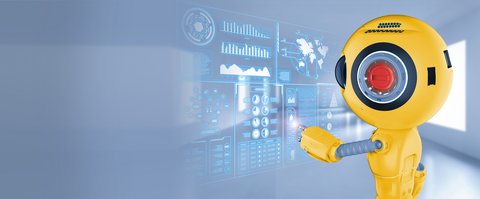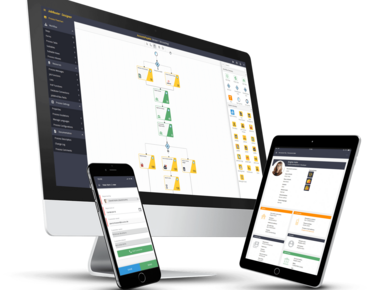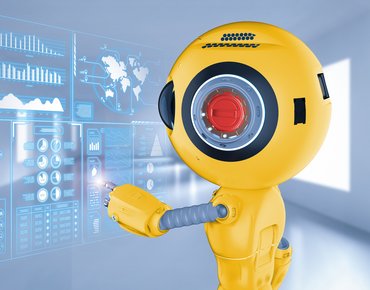
RPA meets DPA
Why you should combine both technologies
- Last updated , created on
- Category Process automation insights
Robotic Process Automation (RPA) and Digital Process Automation (DPA) sound similar but they describe two different process automation approaches, which nevertheless optimally complement each other. We created this comparison for you so that you can see how you can benefit from the combined use of these two technologies.
What is Robotic Process Automation (RPA)?
RPA is a process automation method that enables software robots to learn, imitate, and repeat manual activities. The so called Bots act like real persons and perform work steps based on defined rules. They can read, for example, invoice data from a CSV or data base and transfer them into an ERP system by replicating the manual entry of the data on the user surface. Thus, the automated data transmission is possible, even without an interface. As the method is designed to automate recurring and rule-based tasks, RPA is able to increase the speed and accuracy of workflows significantly.
What is Digital Process Automation (DPA)?
In comparison to RPA, DPA takes a more holistic approach: By means of different technologies, companies can digitize and automatize business processes from start to end. The primary aim is to extend business processes to clients, suppliers, and partners to facilitate the interaction with the company. First of all, DPA enables the digitization of smaller processes, which then can be extended to further business levels.
Let’s take a look at JobRouter®: The platform combines process automation, data and document management, intelligent receipt recognition, and audit-proof archiving. Thereby, companies can start digital transformation step by step.
What kind of added value does the combined use of RPA and DPA offer?
A seamless exchange of data between different systems is not always possible. Older software or internal solutions often cause problems when it comes to the automation of business processes. They do not have interfaces or their connection is difficult and cost-intensive. The solution for this is offered by the RPA components, as they combine the parts, where the DPA interface-technology reaches its limits. Thereby, the manual interactions of a user in connection with the system affected are recorded so that they can be repeated by the so-called Bot any number of times. This also enables companies to reduce runtimes and employee’s workloads. The JobRouter® module JobLink for RPA is the perfect example for the RPA integration into a DPA platform.
As mentioned above, RPA is suitable for the automation of business processes, which are based on fixed rules. If requirements are changing permanently, RPA reaches its limits once again. In that case a DPA platform, based on the Low-Code principle, can help to adapt business rules and processes quickly. A combination of both technologies enables the adaptation of processes based on changing client requirements or market conditions. Simultaneously, Bots can be used for schematic processes. Through the interaction of RPA and DPA the fast digitation and automation of business processes is possible from (the) start to (the) end. That way companies can develop their digital transformation step by step.
Conclusion: Though both technologies have many advantages separately, the full potential of RPA and DPA can only be unfolded by combining them. The added value especially lies in the connection to third applications and the possibility of an end-to-end process automation.
Experience more about JobRouter®
-

Platform Tour
JobRouter® links your processes, documents and data in one feature-rich platform. Let's dive into digital transformation!
-

RPA technology in JobRouter®
With RPA the manual transfer of data from third party systems is a thing of the past!
